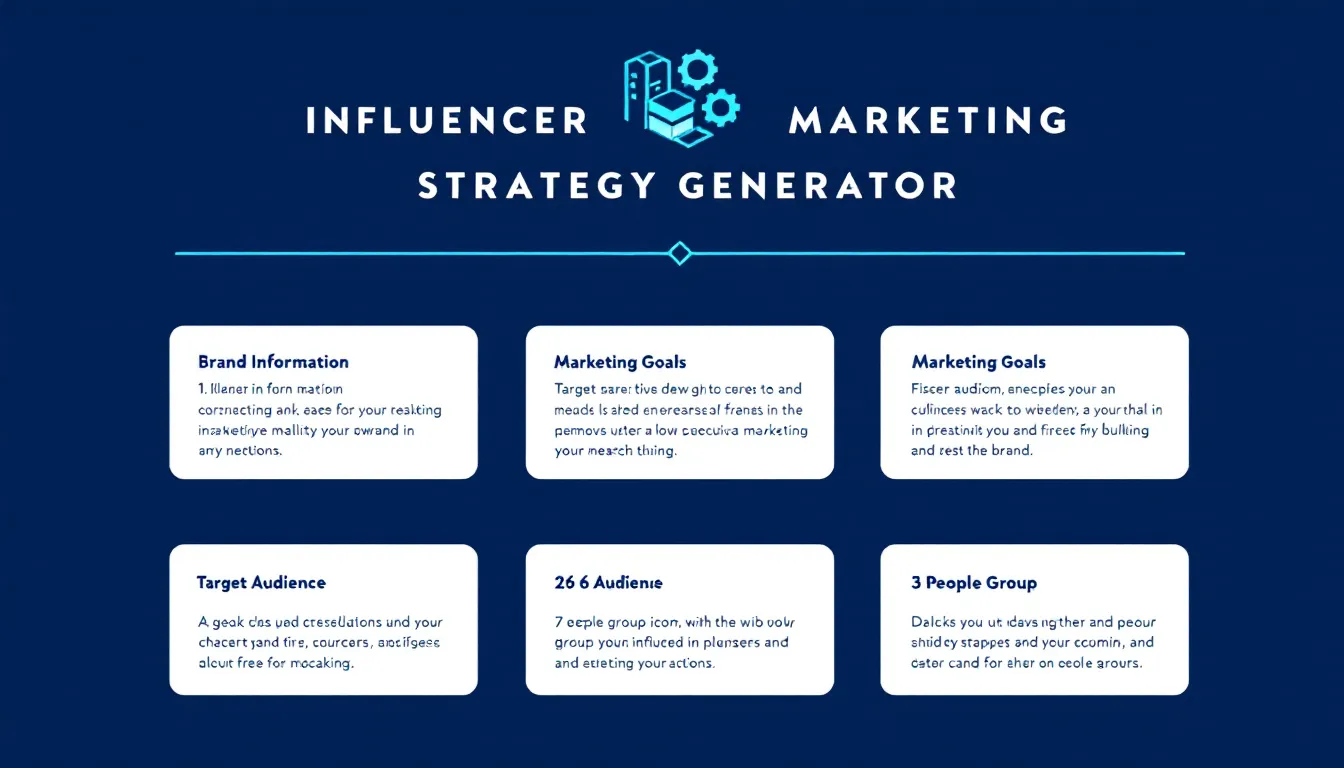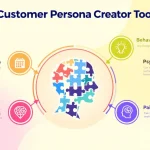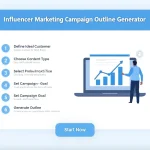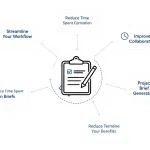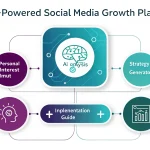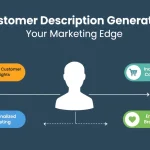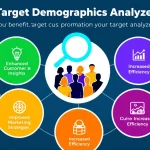Is this tool helpful?
How to Use the Influencer Marketing Strategy Generator Effectively
To create a comprehensive influencer marketing strategy using this tool, follow these detailed steps for each input field:
1. Brand Information
Enter your brand name and a concise description. For example:
- Example 1: “GreenLife Organics – Premium organic skincare products made from sustainable ingredients”
- Example 2: “FitnessFuel – Innovative sports nutrition supplements and workout accessories”
2. Marketing Goals
Define specific, measurable objectives for your campaign:
- Quantifiable targets (e.g., “Increase Instagram engagement by 75% within 3 months”)
- Sales objectives (e.g., “Drive 5,000 new product trials through influencer-specific discount codes”)
3. Target Audience Details
Provide comprehensive demographic and psychographic information:
- Age range, location, interests
- Shopping behaviors and preferences
- Social media platform usage patterns
4. Brand Values and Messaging
Outline your core brand principles and communication priorities:
- Primary brand values
- Key messaging points
- Brand voice and tone guidelines
5. Budget Input (Optional)
Enter your available campaign budget in USD. The tool accepts decimal values for precise budgeting.
6. Campaign Timeline (Optional)
Specify your desired campaign duration (e.g., “6 weeks” or “4 months”)
Understanding the Influencer Marketing Strategy Generator
This advanced tool leverages data-driven insights to create customized influencer marketing strategies aligned with your brand objectives. It analyzes your inputs across multiple parameters to generate actionable campaign recommendations.
Core Components
- Influencer selection criteria
- Platform-specific strategy recommendations
- Content framework development
- Performance tracking metrics
- Campaign timeline optimization
Benefits of Using the Strategy Generator
1. Time and Resource Optimization
The tool streamlines the strategy development process by:
- Automating influencer-brand alignment analysis
- Generating comprehensive campaign frameworks
- Providing ready-to-implement action plans
2. Data-Driven Decision Making
Leverage algorithmic insights for:
- Optimal budget allocation
- Platform selection optimization
- Content strategy development
3. Strategic Alignment
Ensure perfect alignment between:
- Brand values and influencer selection
- Campaign objectives and content strategy
- Target audience and platform choice
Practical Applications and Solutions
Case Study 1: E-commerce Brand Launch
A new sustainable fashion brand used the tool to:
- Identify micro-influencers in the eco-fashion space
- Generate $50,000 in first-month sales
- Build an engaged Instagram following of 25,000
Case Study 2: Service Industry Growth
A fitness coaching platform leveraged the strategy to:
- Partner with health and wellness influencers
- Increase client acquisition by 200%
- Establish authority in the digital fitness space
Strategic Implementation Guidelines
1. Influencer Selection Metrics
The tool evaluates potential influencers based on:
- Engagement rate
- Audience demographics
- Content quality and consistency
- Brand alignment score
2. Content Strategy Framework
Recommendations include:
- Content formats and themes
- Posting frequency and timing
- Campaign hashtag strategy
- Call-to-action optimization
Performance Measurement and ROI
Key Performance Indicators
- Engagement metrics
- Conversion tracking
- Brand sentiment analysis
- Audience growth metrics
Frequently Asked Questions
What is the ideal campaign duration for influencer marketing?
Campaign duration varies based on objectives, but most successful campaigns run for 3-6 months to build momentum and achieve sustainable results.
How many influencers should be included in a campaign?
The optimal number depends on your budget and goals. Generally, working with 5-10 micro-influencers or 2-3 macro-influencers proves effective for most brands.
Which social media platforms work best for influencer marketing?
Instagram and TikTok currently lead in influencer marketing effectiveness, but platform selection should align with your target audience’s preferences and behavior.
How should the campaign budget be allocated?
A typical budget allocation includes 70% for influencer compensation, 20% for content production, and 10% for campaign management and tracking tools.
What types of content perform best in influencer campaigns?
Authentic, story-driven content typically performs best, including product reviews, day-in-the-life features, and tutorial-style content.
Can small businesses benefit from influencer marketing?
Yes, small businesses can achieve significant results by focusing on micro-influencers who often have highly engaged, niche audiences and charge more affordable rates.
Advanced Tips for Strategy Optimization
1. Cross-Platform Integration
Maximize campaign impact by:
- Coordinating content across multiple platforms
- Leveraging platform-specific features
- Creating cohesive messaging across channels
2. Long-term Relationship Building
Develop sustainable influencer partnerships through:
- Ambassador programs
- Exclusive collaborations
- Performance-based incentives
3. Content Repurposing Strategy
Maximize ROI by:
- Adapting influencer content for brand channels
- Creating multiple assets from single collaborations
- Developing user-generated content campaigns
Important Disclaimer
The calculations, results, and content provided by our tools are not guaranteed to be accurate, complete, or reliable. Users are responsible for verifying and interpreting the results. Our content and tools may contain errors, biases, or inconsistencies. We reserve the right to save inputs and outputs from our tools for the purposes of error debugging, bias identification, and performance improvement. External companies providing AI models used in our tools may also save and process data in accordance with their own policies. By using our tools, you consent to this data collection and processing. We reserve the right to limit the usage of our tools based on current usability factors. By using our tools, you acknowledge that you have read, understood, and agreed to this disclaimer. You accept the inherent risks and limitations associated with the use of our tools and services.
